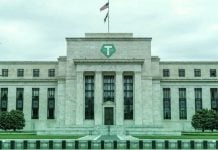Nic Carter has made over the past few years a name for himself as one of the most prolific writers on the topic of Bitcoin in societal and historical context. A full archive of his past writings can be found here.
Twelve years ago today, on Halloween 2008, exactly 491 years after Martin Luther nailed his theses to the door of Wittenberg Castle Church, the idea of Bitcoin was born. More accurately, you could say it was baptized. The network itself wouldn’t exist in a truly live and peer-to-peer fashion until the following January. Block 1, the first ‘true’ block, was mined on the ninth, and digital cash pioneer Hal Finney received the first transaction on the tenth of the month.
The idea of digital cash had existed previously, of course, as had cash-like schemes based on computational work. But this specific scheme — capped supply, not dollar-pegged (many of the early digital cash ideas relied on maintaining a dollar peg), running on a peer-to-peer network, based on a shared ledger, with minting through proof-of-work — was new, and so Satoshi had the privilege of naming it. When you create new things, whether they’re fictional characters or nation-states, you get to name them. In some cases, merely discovering things endows you with a nominative right. But it’s unambiguous that inventors get to christen their inventions.
This matters, because October 31, 2008 was the first time Bitcoin’s core qualities were sketched out, and paired with the name. This makes the system known as ‘Bitcoin’ rather specific. It’s not simply a generic name assigned to the first successful digital cash implementation. It’s the name that Satoshi bestowed upon a system with a predefined monetary schedule, 21 million units, based on proof of work, and so on. Other digital cash systems have existed and will exist. But this one is special, and it’s opinionated. It’s not just a way to move value through a communications medium. It’s an entire monetary manifesto. An affront to the fiat system.
Bitcoin has often confused people. It’s perhaps one of the most misunderstood phenomena of the last decade. If you lack sufficient ideological and historical context, you most likely consider it a complete boondoggle or a bizarre, unnecessary waste of computing power and effort. This is the default position. Most people in the West rarely give any thought to monetary policy or banking — why should they? Their currencies depreciate at a slow, barely perceptible rate. Their bank arrangements work fairly well, and they don’t find themselves frozen out of the financial system too often.
Of course, this isn’t the reality for the majority of the world’s population, who suffer under inflationary regimes, or politicized and untrustworthy banking systems. But the views of American coastal elites are far overrepresented in the discourse, so the press is replete with confused assessments of this purportedly useless monetary scheme. But understanding the purpose of Bitcoin is itself a shibboleth. If you don’t get it, it’s probably not meant for you.
Even among acolytes, Bitcoin’s true nature is hard to pin down. It’s a fast-settling payments and settlements network, which led people to believe it would be suitable for petty-cash style payments on the internet, or even at brick and mortar points of sale. It’s a highly-available, replicated, and consistent database, which led many to envision it as a tool for the storage of arbitrary data. It’s highly innovative, and relies on new discoveries and improvements in computer science, cryptography, and peer to peer networking, yet it is perceived as antediluvian, a relic almost. These contradictions are core to the nature of Bitcoin. Something unowned, with no one to speak for it, will appear multitudinous in the minds of its users. It’s a glittering prism, refracting the opinions of observers, spitting out radically different visions of itself based on their perspectives.
An endless time horizon
Recently, the great monetary historian George Selgin pointed out that Bitcoin was unlikely to displace the dollar anytime soon, because monetary network effects are incredibly powerful and enduring. And I fully agree. The difference between us is simply one of time horizons. I am willing to be patient. I believe Bitcoiners have this in common. They recognize that they have undertaken a near-hopeless task. Creating a global, neutral, apolitical settlement medium and standard of value will not happen overnight. We have barely begun the project. We are only twelve years in. But we have made some great progress so far. So we push forward.
What’s the measure of a healthy society? Arguably, it’s a willingness to undertake long term projects, whose completion their originators will never live to see. Virtually anything worth building takes time to build. Enduring institutions don’t come easy.
The cathedral is not the stones that compose it. Nor is Bitcoin the blocks. The cathedral is the physical embodiment of a singular idea: something greater exists. Its greatness makes you feel small, and reminds you of your place in the universe. We modern folks, who trivially fly through the heavens for the price of one-tenth of a day’s labor, still find cathedrals imposing and sublime. Imagine how a medieval peasant would have felt in the somber coolness of the great hall. The spires towering above him, the tallest building he would see in his lifetime. The sun’s light filtering through colored glass, revealing an array he would never witness anywhere else. All of it, painstakingly built not for vanity, or commerce, but for the glory of God, over generations and generations. Fathers and sons and grandsons toiling over the same edifice.
My university years were spent studying philosophy in St. Andrews, a small town on the east coast of Scotland. St Andrews was the site of a cathedral constructed to house the relics of Andrew the Apostle, the patron saint of Scotland. The diagonal white cross on the blue background, the one seen on the Scottish flag, the Saltire, represents the cross upon which he was crucified. For one hundred and fifty-eight years, starting in 1160, thousands of stone masons, laborers, and townsfolk labored with hand tools to build a suitable container for these holy relics. Only a tiny fraction of the people who poured the whole energy of their lives into this magnificent building would ever see it completed. For the rest of them, knowing that they were working on a sublime, civilizational project was enough. They were happy to submit to a vision far greater than themselves, rising above their transient concerns. This was the height of culture, beauty, and technology at the time. What more could one hope to live for?
It’s virtually impossible to set foot in an ancient cathedral today, a thousand years old, without contemplating the sheer human effort expended to place every last stone and every last pane of colored glass. It’s a monument to and a digest of the embodied work sunk into those ancient stones.
The Satoshean critique
Martin Luther had ninety-five critiques. Satoshi had, effectively, one. Satoshi’s animus lay with the centralized nature of banking, credit, and base money itself.
The root problem with conventional currency is all the trust that’s required to make it work. The central bank must be trusted not to debase the currency, but the history of fiat currencies is full of breaches of that trust. Banks must be trusted to hold our money and transfer it electronically, but they lend it out in waves of credit bubbles with barely a fraction in reserve. We have to trust them with our privacy, trust them not to let identity thieves drain our accounts.
Martin Luther sought to reform the Church, to return it to a truer, earlier state. Aside from presenting us with a rubric and then a first implementation of a system, Satoshi was not as forthcoming. The Bitcoin whitepaper is probably one of the most semantically dense documents in history. Not a word is wasted. Satoshi was famously terse on forum posts, only sparingly opining on the political and economic objectives of the system. The blanks have been left to us to fill in.
And we have been doing so with gusto. Bitcoiners, through the mechanism of novel technology, seek to restore a monetary arrangement of the past. Bitcoin is new technology designed to pursue baroque ideas. It hearkens back to the era of sound money, in particular the harmonious period from 1880 to 1914 when the international order was largely united on a gold standard and free trade flourished. In the minds of bitcoiners, we sit at an epochal turning point. With any luck, future historians will speak of the bitcoinist restoration, which reversed the losses suffered in the fiat interregnum of 1971–2020. I call it an interregnum because a fully fiat standard is a historical anomaly rather than the default. In this manner, Bitcoin can be understood as revanchist or restorative. We are reclaiming lost territory, discarded ideas, and lost time.
Some critics allege that a Bitcoin standard mirroring the one supported by gold is unoriginal and trite; that a Bitcoin standard would suffer the same failures. Why bother revisiting failed monetary arrangements of the past? But Bitcoin, being a dematerialized monetary commodity, is new, and distinct from gold.
These critics fail to grasp its superiority over classic monetary technologies, which should give a Bitcoin-centric system more robustness. It’s more auditable, meaning that banks and deposit-taking institutions can be held accountable by their users. It’s cheaper to verify, requiring only basic computer hardware. This globalizes and democratizes the monetary system. Anyone can participate, not just a large institution with the resources to safeguard large quantities of gold.
Unlike gold, it’s trivial to take physical delivery of the asset. This means that users have a free choice between self-custody and an intermediated approach. This permanent optionality — in the worst case, I can take physical, final ownership of my own assets — is an incredibly powerful feature, that tilts the balance of power towards the individual, away from the State or corporate oligarchs. It’s about time the pendulum swung back.
Even where service providers are involved, competition for depositors is fierce. Closing your account at a bitcoin bank is as simple as withdrawing your coins and depositing them at another. And it’s programmable. Sophisticated conditions can be encoded directly into transactions. This is a design space we have barely begun to explore. The immediate concern is the integrity of the network, which is why system-wide upgrades require such careful vetting. There is likely no open source project on earth that has witnessed as much scrutiny as Bitcoin. It’s a $250 billion bug bounty, after all. So we move slowly, but deliberately.
People sometimes ask me what Bitcoin means to me, and this is my best attempt at an answer. Bitcoiners who earnestly believe in a better monetary world, and aren’t afraid to bring that reality to bear, are the equivalent of masons and laborers, working on a monetary cathedral which they may never see come to fruition. But this is ok. As long as we believe in a big, audacious vision, believe that there is still beauty in the world, and that there remain great things worth striving for, we will succeed and inspire.
Today, I can’t imagine anything else I’d rather be working on. I couldn’t be happier to devote my career and energy to the vision laid out by Satoshi twelve years ago. The satoshean critique is true, and it is continually reinforced, as established monetary authorities grow more erratic and capricious. The instantiation of a stable, Bitcoin-based monetary system is by no means guaranteed, but it becomes more plausible by the day. I don’t know if I will see the completion of this project, or even if it will work in the long term. But that doesn’t bother me. I’m focused on placing the next brick.
Nic Carter
October 31, 2020


























